These Japanese onsen are worth travelling for
Dreaming of a trip to Japan? You certainly will be after seeing these enchanting onsen hot springs.

Japan is one of the most technologically advanced nations on earth; a glittering, neon marvel where innovation is almost like breathing. Yet, behind its high-tech façade is a land where tradition and customs still play a role in modern life.
Among its most enduring traditions is public bathing: specifically, luxuriating in the steaming mineral-rich waters of an onsen. It’s an experience enjoyed by the Japanese since at least the sixth century, and many travellers love it too.
There are also plenty to choose from: some 3,000 onsen resorts are dotted among the lush valleys and misty mountains of Japan’s major islands. There’s even one famously frequented by wild monkeys (humans cannot join them, for obvious reasons).
Onsen come in all shapes and sizes, with the definition of an onsen expanded over the years to include public bathhouses and resort towns located near the hot springs, and can be enjoyed pretty much all year-round.
To fit the true definition, however – one enshrined by law in Japan's Hot Springs Act – a naturally-occurring onsen must have water above 27 degrees Celsius and contain at least one of 19 different minerals to treat or at the very least soothe all kinds of ailments.
Sulphur rich onsens are said to help with skin disorders and arthritis, whereas sulphate springs are good for healing cuts and bruises (and bruises are almost inevitable after any winter ski trip to Japan's richly-powdered slopes).
Although tempting to stay longer, it’s recommended you spend no more than 10-15 minutes in the water, as the high temperature can raise your blood pressure and also lead to dizziness.
While every onsen can be beautiful in its own way, some are simply breathtaking: from a still mountain pool perched beside a gushing waterfall to an open-air bathhouse hidden on the roof of a Tokyo skyscraper.
Intrigued? Here are some of Japan’s best onsen to inspire your next trip.
Spa Izumi Haneda Airport
Hopping into a massage chair before or after your flight is a great way to jumpstart circulation and soothe those travel-weary muscles. That said, an onsen at the airport is even better. That’s exactly what awaits at Haneda Airport.
Perched on the upper levels of Haneda Airport Garden retail and hotel complex, directly linked to Terminal 3, Izumi Tenku no Yu is the ultimate pre- or post-flight destination: a spa boasting four distinct indoor and outdoor bathing zones, saunas and more.
Open 24 hours a day, it welcomes both hotel guests and members of the public. After a good soak, visitors can treat their taste buds to gourmet meals at the adjoining restaurant and, on a clear day, breathe in views all the way to the looming giant that is Mount Fuji.
Amanemu
Swiss-owned Aman Resorts are synonymous with elegance and understated luxury – a perfect complement to the Japanese ‘wabi-sabi’ design aesthetic of finding beauty in simplicity.
Set amid the forested hills of Ise-Shima in central Honshu, overlooking the maze-like islands and sapphire waters of Ago Bay, their exclusive Amanemu property is no exception.
Inspired by ryokan hotels of old, each of the resort’s beautiful villas and suites is a haven of tranquility, with woven textile shutters, abundant natural light, and a design that seamlessly flows from indoors to out.
Guests can soak their cares away in a private onsen bath in their room, or relax on a daybed between dips in the main thermal hot spring pool.
Dai-ichi Takimotokan
Its mineral rich waters may be primarily sourced from an area dubbed Hell Valley, or ‘Jigokudani’ if you want to use the local name, but Noboribetsu Onsen village is as heavenly as they come.
Visitors will find numerous ryokan guesthouses and hotels dotted around the Hokkaido resort town, each with its own hot spring baths of varying quality. But, if you want to enjoy what is arguably the finest around, Dai-ichi Takimotokan is the one to pick.
Founded in 1888 as Yumoto Takimoto, before changing names in the 1950s, Dai-ichi (meaning number one) boasts 35 bathing options – among them a sulphur spring for boosted circulation and an alum bath for relieving dry skin, plus a replica of the very first bath on site.
In winter, you can also drink alcoholic beverages including sake while breathing in the snowy vista from the open-air baths – a pretty rare experience in an onsen. Day visits are welcome, though the Japanese-style accommodation is well worth checking into.
Zao Onsen
The northern Tohoku region is renowned for its exceptional skiing. Among its most popular hangouts is Zao Onsen Ski Resort – home to 38 lifts, 14 slides and 12 ski courses. It’s also where you’ll find a traditional onsen with an incredible 1900 year history.
Sometimes called the ‘springs of beauty’, Zao Onsen’s sulphur-rich waters are believed to have a rejuvenating quality, while also helping with the likes of joint pain and skin ailments.
There are multiple bathing facilities to choose from, including public bathhouses and foot spas, but the one you’ll want to visit is the large open-air bath. The spring-fed onsen is as tranquil as they come, allowing you to simply enjoy the murmuring of the river and bird song.
Sennin-buro
A short drive southeast of Osaka will lead you to the historic Wakayama Prefecture, which is renowned for its mossy temples, centuries-old onsens, and Kumano Kodo pilgrimage trail.
Kawayu, one of the area’s most popular onsen villages, is home to an impressive geothermal party trick. Anywhere you dig along the village’s rocky riverbank, hot water will slowly bubble up to the surface, creating a warm and inviting hot spring pool just for you.
During winter, a large section of the river is blocked off from the main flow, with hot water that rises up heating the open-air pool. Known as Sennin-buro, meaning ‘thousand person bath’, it attracts thousands each year. But, often in the early morning, you can have it all to yourself.
Kinosaki Onsen
Located around 2.5 hours by train from Kyoto, Kinosaki Onsen is a charming village with not one, not two, but seven natural hot springs.
Beautifully preserved architecture, tourists wearing traditional yukata, and a serene, willow-lined canal that reflects the lights of guest houses at night… visiting Kinosaki is like stepping back in time to old world Japan.
Unlike most onsen in Japan, the bathhouses in Kinosaki all accept visitors with tattoos of any size, shape or colour (tattoos have long been associated with less-desirable elements of society such as organised crime).
Ryokan guesthouses in the area will often include entry tokens to the various onsen too, with all of them located within walking distance of each other.
When you’re pruned from enjoying the hot springs, there are also pristine beaches nearby, such as Takeno, as well as the Edo-era Izushi Castle Town and scenic hiking trails to explore.
Oirase Keiryu Hotel
At the northern tip of Honshu island is Aomori Prefecture – a destination renowned for its clear streams, mossy rocks, lush beech forests, and spectacularly-high annual snowfall.
All of these natural wonders come together at Oirase Keiryu Hotel, a luxury property which feels like an extension of the fores. Large windows overlooking the Oirase mountain stream only add to this feeling.
Its Yaekokonoe-no-Yu bath, set beneath a lush canopy and alongside a cascading waterfall, is arguably one of the most stunning onsen in Japan. It looks so organic you could easily assume it simply sprung up as part of the natural landscape.
In winter, a frozen waterfall in nearby Oirase Gorge is reproduced around the edges of one of the hotel’s hot spring pools, creating a magical, almost Narnia-like atmosphere.
Dogo Onsen Honkan
It would be negligent to discuss onsen in Japan yet not mention Dogo Onsen Honkan, which dates from the Meiji Period and is believed to be one of the oldest bathhouses in the country.
Located in the city of Matsuyama on Shikoku island, the current structure was built in 1894, yet the site itself has a long history of bathing, stretching back to at least 712AD.
The three-storey, wooden building is an atmospheric maze of narrow passageways, staircases and rooms. There are two types of bath available – the gender-separated communal Kami no Yu (or bath of the gods), and the smaller and more private Tama no Yu (bath of the spirits).
Hoshinoya Tokyo
On the rooftop of an 18-storey skyscraper in Tokyo’s financial district is probably the last place you’d expect to find an onsen, yet here it is. And it’s a thing of beauty.
Hidden from the hustle and bustle of Tokyo, the top floor of the five-star Hoshinoya Tokyo hotel features two gender-separated bathing halls, each filled with hot, mineral-rich water pumped up from 1500 metres underground.
The high saline content of the water is said to help the body not only relax, but also improve its ability to preserve heat.
With indoor and outdoor bathing areas connected by a cave-like tunnel, relaxing in the soothing waters, watching the clouds pass by overhead, is an experience worth travelling for.
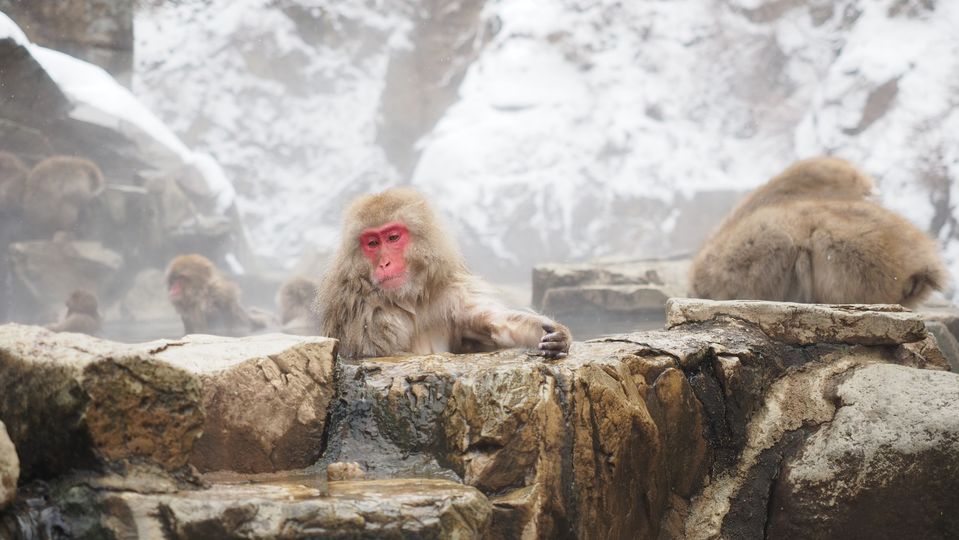
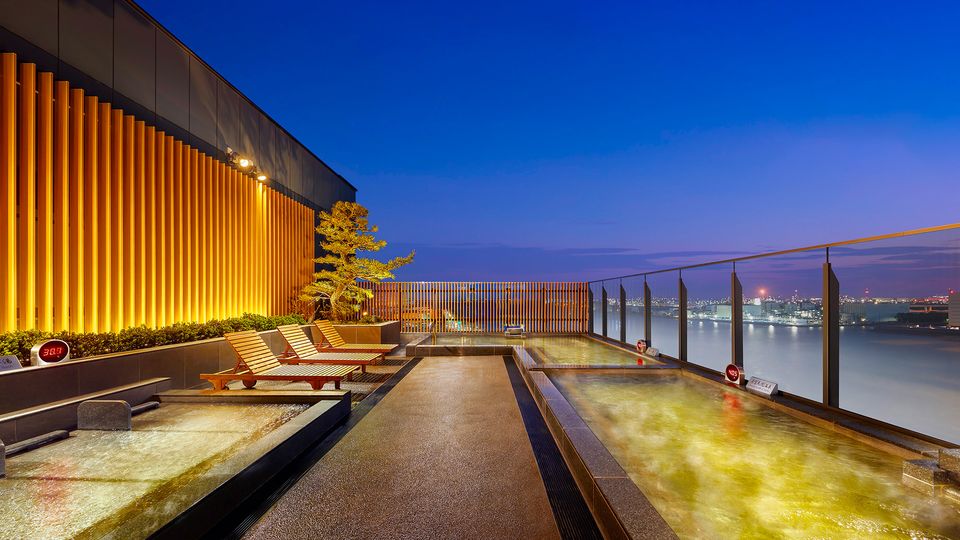
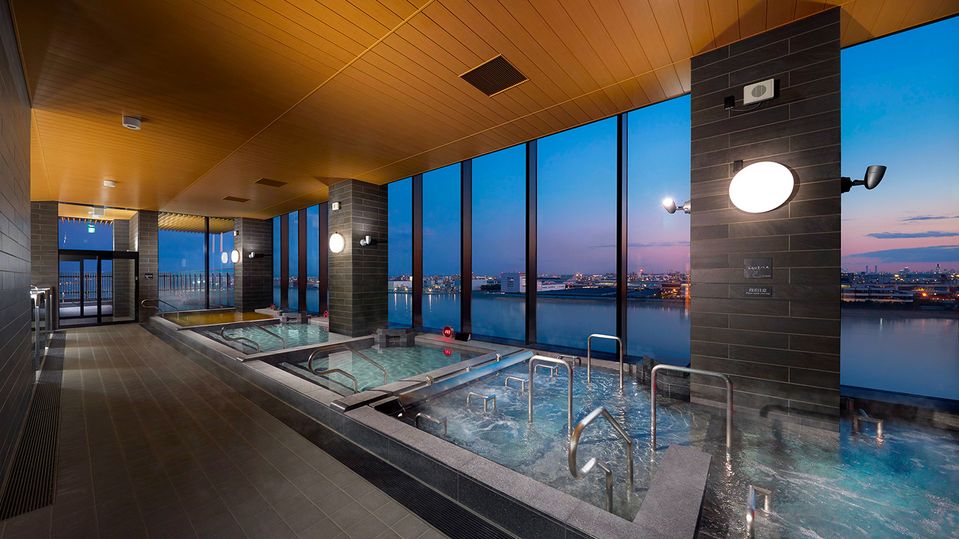
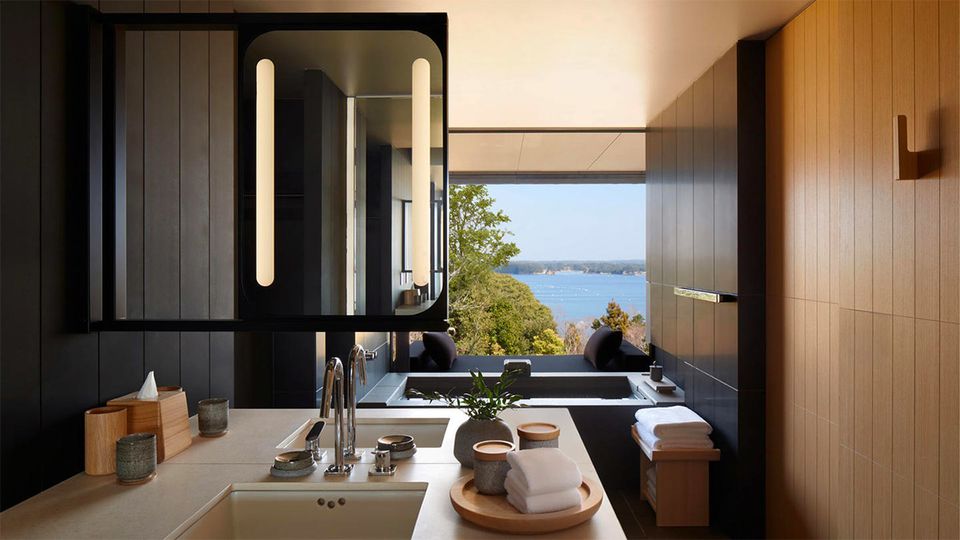
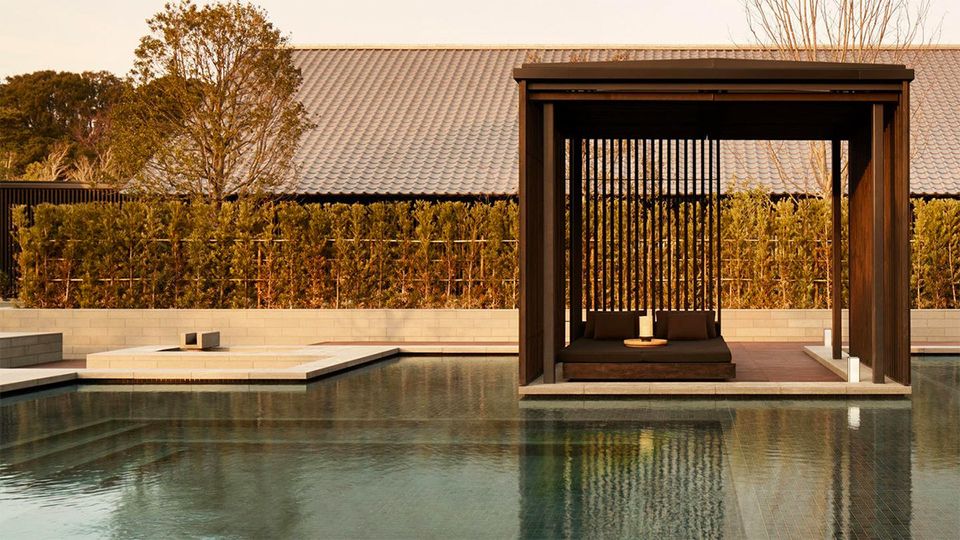
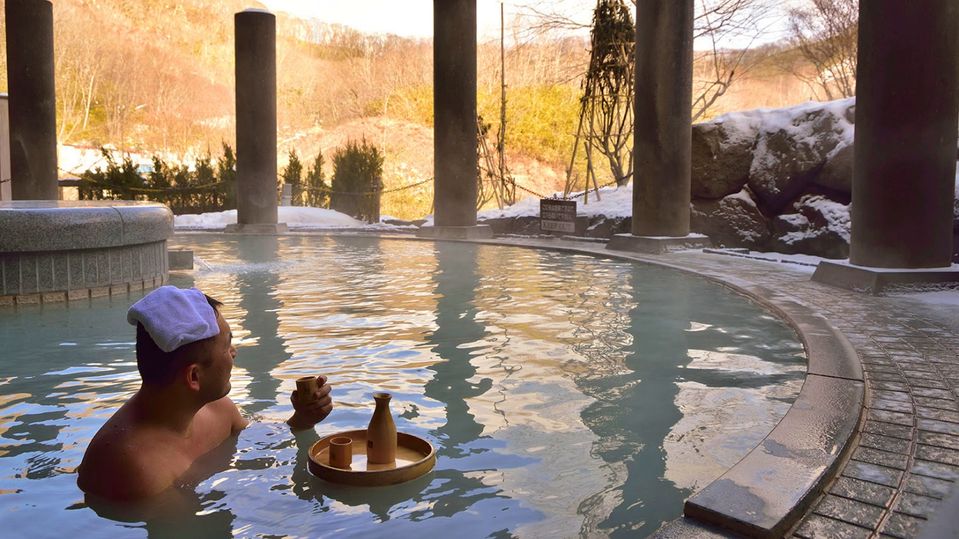
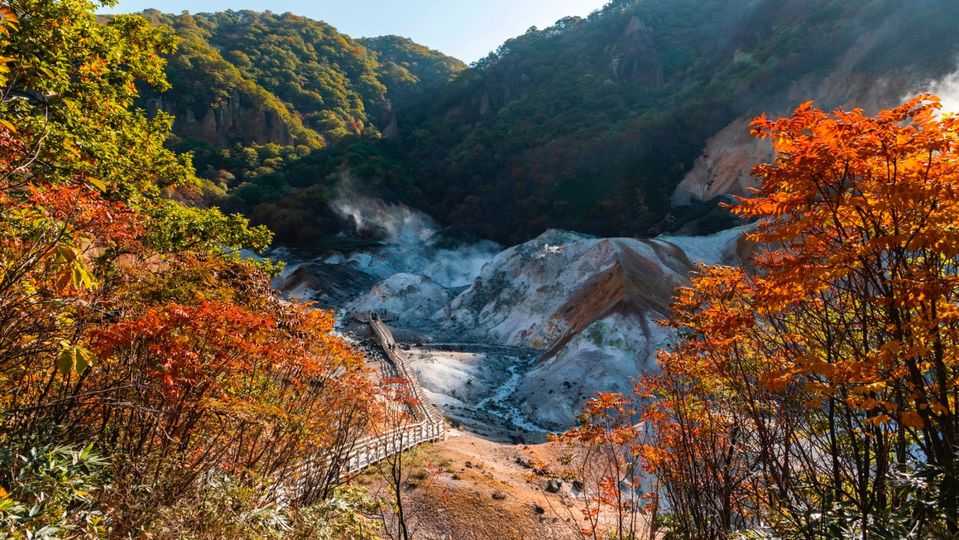

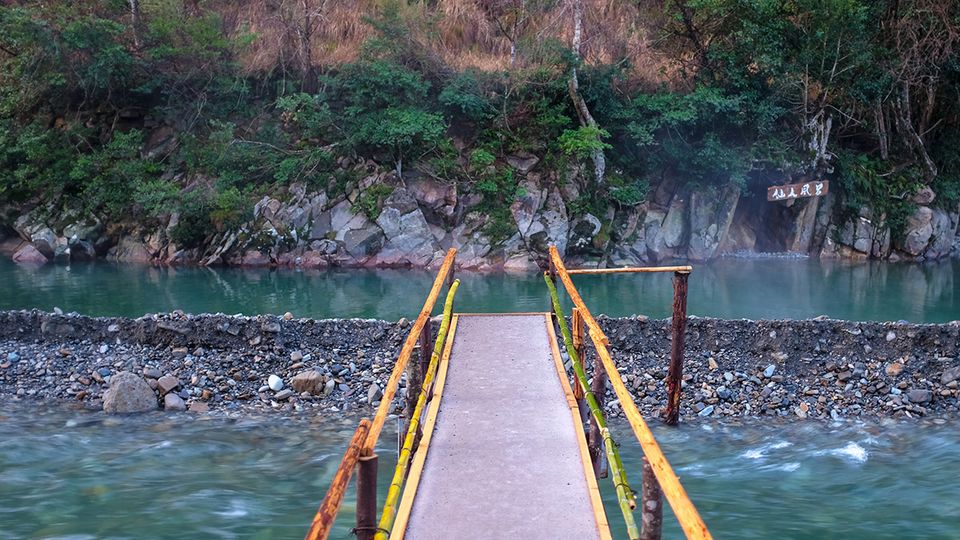
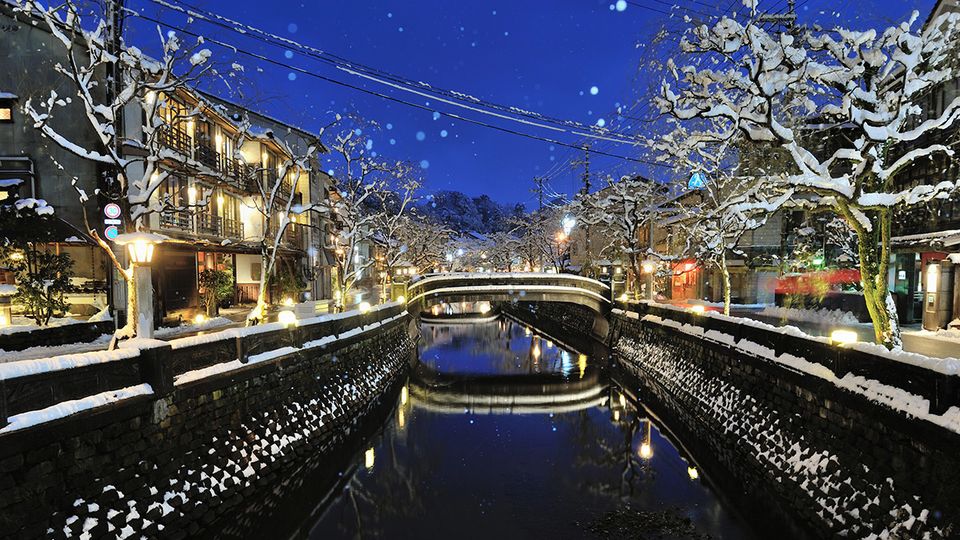
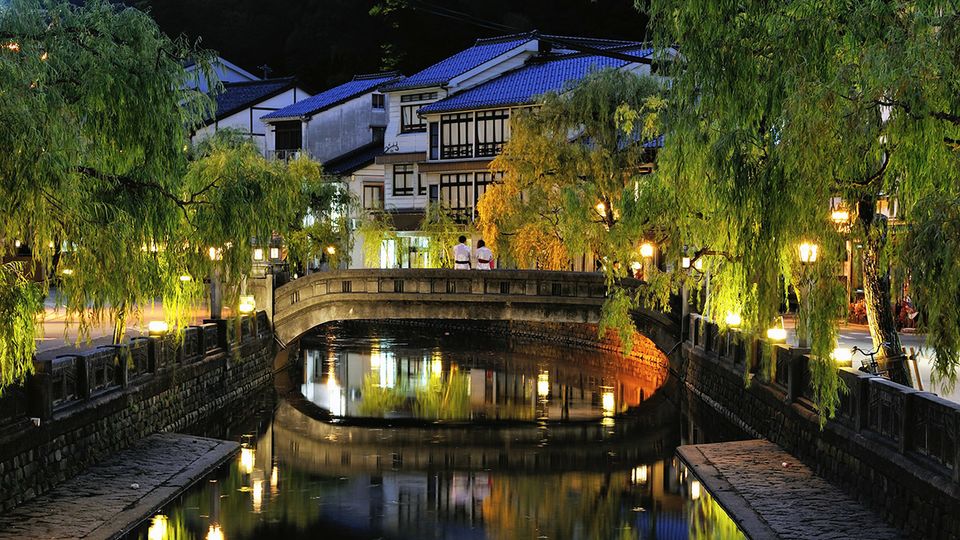

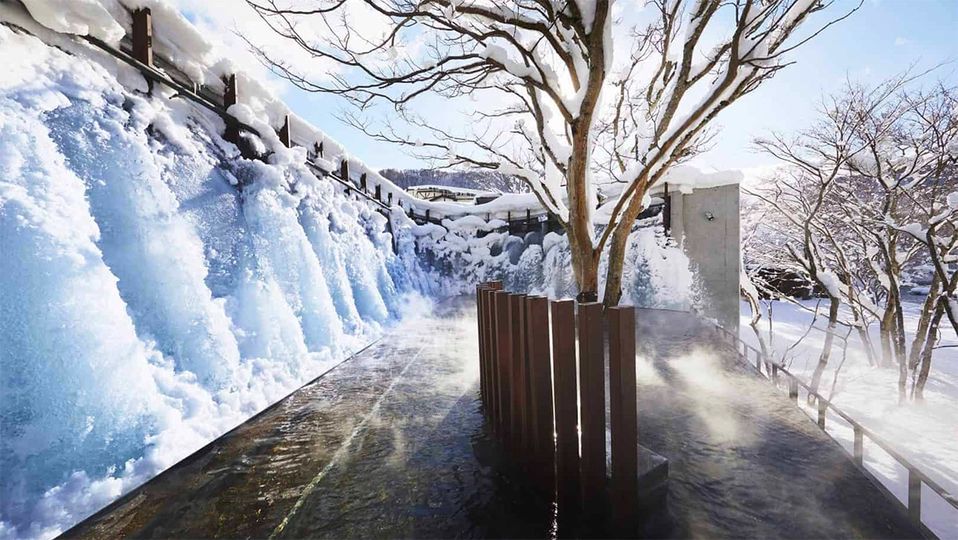
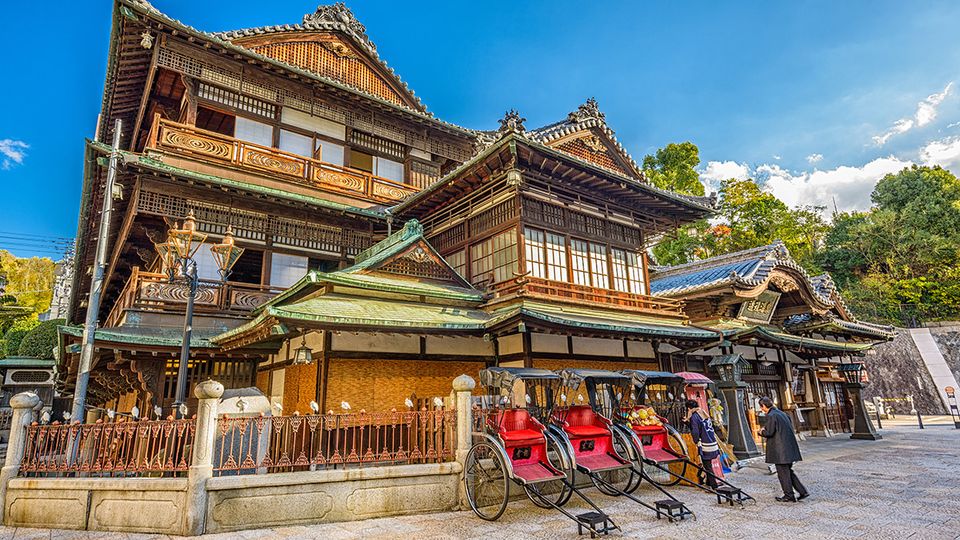
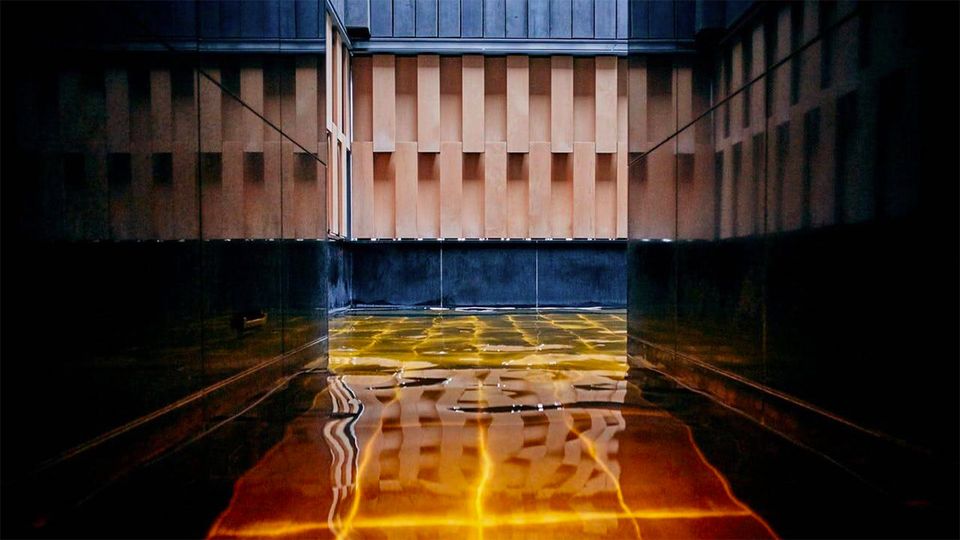
Hi Guest, join in the discussion on These Japanese onsen are worth travelling for